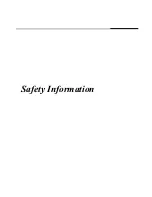
8
Getting To Know Your Machine
Precautions
Toner and Paper
Handling
■
Do not look directly at the exposure lamp when copying.
■
Do not turn the power switches Off or open the front cover during copying.
●
Do not drop paper clips or other metal objects into the copier.
■
If you are not going to use the copier for long periods of time, turn
OFF the Power Switch on the Left Side of the machine and wait 10
seconds then, turn OFF the Main Power Switch on the Back Side of
the machine.
■
Energy Save Mode Notice
●
If the energy save mode is set to Shutdown mode, the following
functions will not work while the unit is in this mode.
When using the following functions, we recommend that you leave the energy save mode in the
initial factory default setting (Sleep). (See page 66)
1) Data Reception Function while Tandem/Remote Copying is being used
2) Printer Function (Local and Network Connections)
■
Identification (Key Operator ID) Code
●
A number of Copy/Scan Mode functions can be checked or changed using the Function Mode,
however, access to more advanced functions requires the input of the Identification (Key Operator
ID) Code.
For Key Operator:
To secure the advanced functions of your machine, select and input an Identification (Key Operator
ID) Code then, record it and keep it in a safe place for your future reference. (For more details,
consult with the authorized service provider)
■
Store toner, drum and paper in cool areas with low humidity.
●
Use high quality 16 - 24 lb (Sheet Bypass: 15 - 35 lb) paper.
●
For optimum performance, it is recommended that only Panasonic Brand supplies are used
in the copier.
●
Do not unseal the toner bottle unless you are ready to use it.
●
Certain types of transparency film may not be compatible and may damage your machine.
Consult with an authorized Panasonic dealer for advice regarding non-standard paper types.
(Panasonic has tested “3M PP2500” transparency film and found it to be compatible.)
Installation
■
The copier should not be installed in areas with the following conditions:
●
Extremely high or low temperature and humidity.
Ambient conditions
Temperature: 50 – 86
°
F
Relative humidity: 30 – 80 %
●
Where temperature and humidity can change rapidly, causing condensation.
●
Direct exposure to sunlight.
●
Directly in the air conditioning flow.
●
In areas of high dust concentration.
●
In areas of poor ventilation.
●
In areas with chemical fume concentration.
●
In areas with extreme vibration.
●
With unstable or uneven conditions (floors, etc.).









































